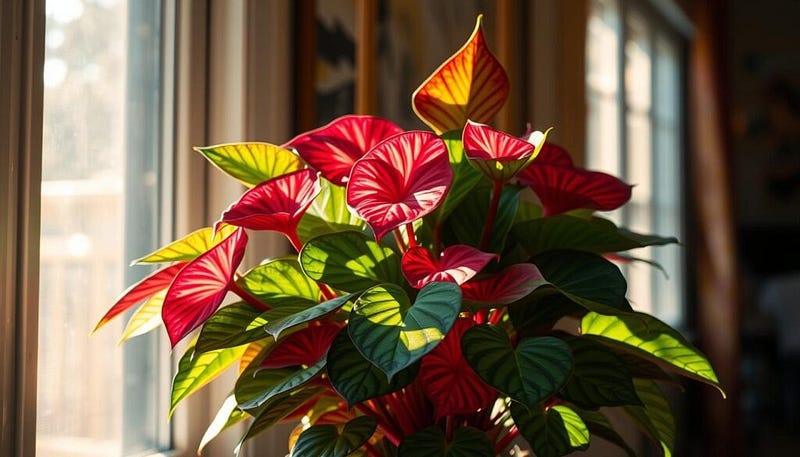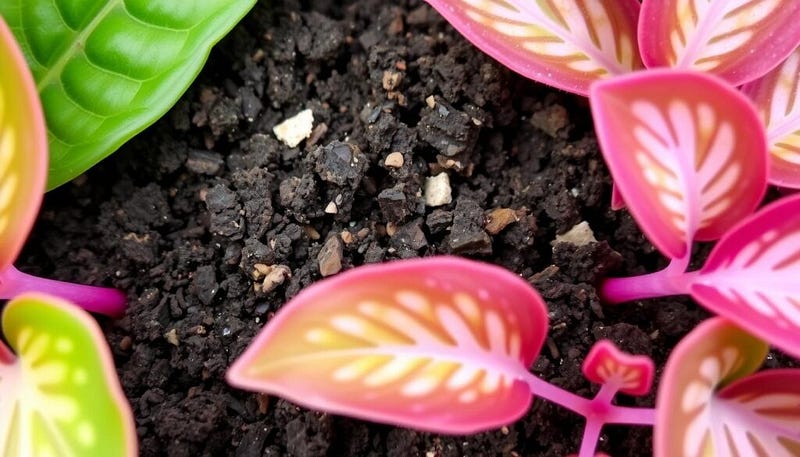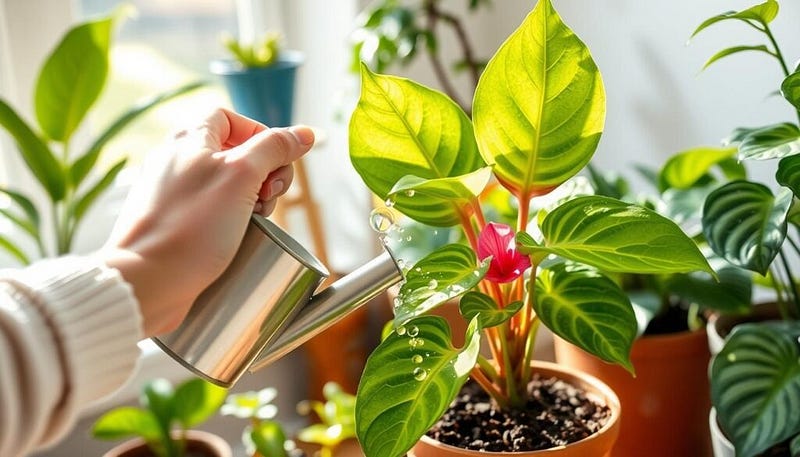Angel wing begonias are a favorite among gardeners. They come from the tropical areas of South and Central America. These plants stand out with their upright stems, spotted leaves, bright colors, and lots of flowers.
They are easy to care for, making them great for both indoor and outdoor gardens. Their striking looks and simple care make them a top pick for many.
Why Angel Wing Begonia Makes a Great Houseplant
Angel wing begonias are not just pretty; they’re also easy to grow indoors. With the right care, they can bloom for six years or more. This makes them a lasting addition to any room.
They bloom consistently, adding color to your home all year. This is a big plus compared to some other begonias.
These plants can handle different light conditions. They do best in bright, indirect light but can also thrive in artificial light. Just make sure the light is 30–50cm away and on for 12–16 hours a day.
This adaptability makes them perfect for places with little natural light. Apartments, offices, or any space with limited sunlight can benefit from them.
Angel wing begonias also have practical benefits. They help clean the air by removing toxins. This improves the air quality indoors.
Their compact growth is great for container gardening. They fit well in pots, allowing you to enjoy them on patios, balconies, or windowsills.
“Angel wing begonias are the perfect blend of beauty and practicality, making them a must-have for any indoor gardener.”
Angel Wing Begonia
Botanical and Common Names
The angel wing begonia, known scientifically as Begonia coccinea, is a beautiful plant. It brings elegance to any indoor or outdoor space. Its leaves look like folded angel wings, and its blooms are vibrant.
It’s also called the “cane begonia” because of its cane-like stems. Gardeners and plant lovers choose it for its easy care and striking look.
Plant Family and Native Habitat
The angel wing begonia is part of the Begoniaceae family. This family includes many flowering plants. These begonias come from the tropical rainforests of Brazil, where it’s warm and humid.
Knowing where they come from helps us understand how to care for them. This is true whether they’re in a house or a garden outside.

“Angel wing begonias are considered the hardiest and easiest-care of the begonia family.”
Light Requirements
Angel wing begonia light requirements are quite specific. These plants love bright, indirect light. Direct sunlight can burn their leaves, so a filtered window is best. But, too little light makes them leggy and colorless. Finding the right light balance is key for your plant’s health.
Angel wing begonias are made for the rainforest understory. There, they get dappled sunlight. This helps them grow well in shaded spots. By matching their natural lighting conditions for angel wing begonia, your plant will stay healthy and vibrant.
- Bright, indirect light is the ideal lighting condition for angel wing begonias.
- East- or west-facing windows are excellent options, providing the necessary bright, indirect light.
- Assess the light levels in your home by checking the sharpness of shadows and color hues to determine if the conditions are suitable.
- Supplement natural light with artificial grow lights, such as fluorescent, LED, or HID, if needed.
- Monitor your plant’s growth and make adjustments to the lighting as necessary, especially with the changing seasons.
Knowing the light requirements for angel wing begonia helps you create the best home for your plant. This way, it can thrive and show off its beautiful leaves.

Soil Needs
Choosing the right soil is key for your Angel Wing Begonia’s health and growth. These tropical plants love a soil mix that drains well and is rich in organic matter. This helps their roots breathe and prevents waterlogged soil that can cause root rot.
Well-Draining Soil Mix
To make the perfect soil mix, mix equal parts of peat moss, perlite, and high-quality potting soil or garden soil. This mix ensures good drainage and keeps enough moisture for the roots. Angel Wing Begonias do best in slightly acidic soil with a pH of 6.0 to 6.5.
Replicating Natural Habitat Conditions
In their natural habitat, Angel Wing Begonias grow on the forest floor. The soil there is rich in organic matter and drains well. By creating similar soil conditions, you give your begonia a nurturing environment that matches its native home.
To keep your begonia’s soil just right, water it well and let the extra water drain. This stops water from pooling in the pot, which can cause root rot and fungal diseases. Also, repot your begonia when it grows twice its size or every year to refresh the soil nutrients.

Watering Needs
Watering your angel wing begonia right is key to its health. These plants are easy to care for but can still face watering problems. Follow these tips to water your angel wing begonia well.
Avoiding Overwatering and Underwatering
Angel wing begonias like their soil moist but not wet. Water when the top inch of soil feels dry. Don’t let the soil dry out completely, as this can harm the plant.
But, too much water can cause root rot and diseases. Make sure water can drain well from the pot to avoid this.
Proper Watering Techniques
- Use room temperature water to mimic the plant’s natural habitat conditions.
- Water thoroughly, allowing the excess to drain out of the bottom of the pot.
- Avoid letting water accumulate in the saucer, as this can lead to root rot.
- Mist the leaves occasionally to maintain the ideal humidity level for your angel wing begonia.

By following these simple watering guidelines, you can help your angel wing begonia thrive. Avoid common problems like overwatering or underwatering. With consistent care, you’ll see lush, beautiful growth from this striking houseplant.
Temperature and Humidity
Getting the right temperature and humidity is key for your angel wing begonia to grow well. Let’s look at what this beautiful plant needs.
Ideal Temperature Range
The angel wing begonia loves warm temperatures, best between 65°F and 75°F (18°C to 24°C). Keep it away from extreme temperatures to keep it healthy and looking good.






